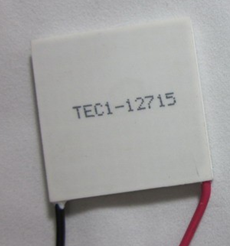Thermoelectric cooler (TEC) is an ancient technology. As early as in the 1950’s,
TEC has once set off a boom. When it is connected to a power supply, it can become cold, which is very popular among home appliance manufacturers. However, because of the poor performance of components, it failed to be applied in actual life. The key, which determines the rise of decline of materials and process of TEC, is to improve figure of merit and the cooling effect of the hot and cold end.
In order to meet the cooling requirement, TEC materials not only need N and P type semiconductor properties, but also need thermoelectric potential, electric conductivity and heat conduction rate of semiconductor added impurity. Production of traditional TEC materials mainly use zone-melting method and powder metallurgy method, but the production cost is very high and the equipment process is also very complicated. At home, the common used materials are on the basis of Bi
2Te
3, P type is Bi
2Te
3-Sb
2Te
3 and N type is Bi
2Te
3-Bi
2Te
3. The vertical zone melting method is used for extracting crystal materials. The optimization coefficient of thermoelectric elements produced in this way is only 3×10
3K
-1, which can result in low cooling efficiency. When the temperature difference is 50℃, the cooling coefficient is only 0.06. Only if the optimization coefficient is up to l3×10
3K
-1, the cooling efficiency can be the same with the compression refrigeration efficiency.

Therefore, because of early technology and process constraints, the TEC efficiency is too low, so TEC haven’t received enough attention and application.
If you want to know more, please feel free to contact us.
Our web site is
http://www.analogtechnologies.com/
